There are many possible causes for white tongue, and in some cases, it comes with an unpleasant odor and mouth dryness. To get rid of it, sometimes you just need to brush your teeth. But what should you do if that doesn’t help?
❗ This article is for informative purposes only and can’t replace the advice of a specialist.
What white tongue is

The white film may cover the entire tongue, part of it, or appear as spots. At the same time, an unpleasant odor and taste in the mouth may appear. It looks as if there are small white hairs on the tongue’s surface. In fact, they are buds covered with organic particles, bacteria, and dead cells.
White plaque on the tongue (which can also be yellow) may appear for different reasons, like due to irritation or because of an infection. It usually disappears after several days. If the situation doesn’t change for several weeks, and it’s painful to eat and talk, it’s best to see a doctor.
It’s important to note that the plaque may not only be white. While a pink tongue is normal, a brown tongue means the person drinks too much coffee or tea. A yellow tongue means there’s something wrong with the liver, and a red tongue is a sign that the person lacks vitamin B.
Why the tongue becomes white
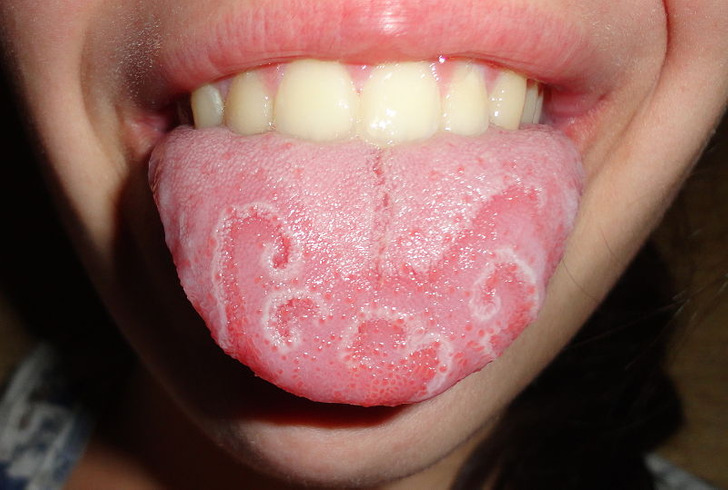
Usually, the tongue becomes white due to bacteria, leftover bits of food, or dead cells that get stuck in between the buds. Because of this, the buds may increase in size or become inflamed. This is how white spots on the tongue’s surface appear.
Sometimes, the plaque appears due to an illness. For example, the geographic tongue is also a condition where white spots appear on the tongue. It’s quite rare, and the causes are unknown, but the condition itself is often connected to eating foods that irritate the tongue. It may also be a reaction to stress, an illness, or hormonal changes.
Why white plaque appears on the tongue
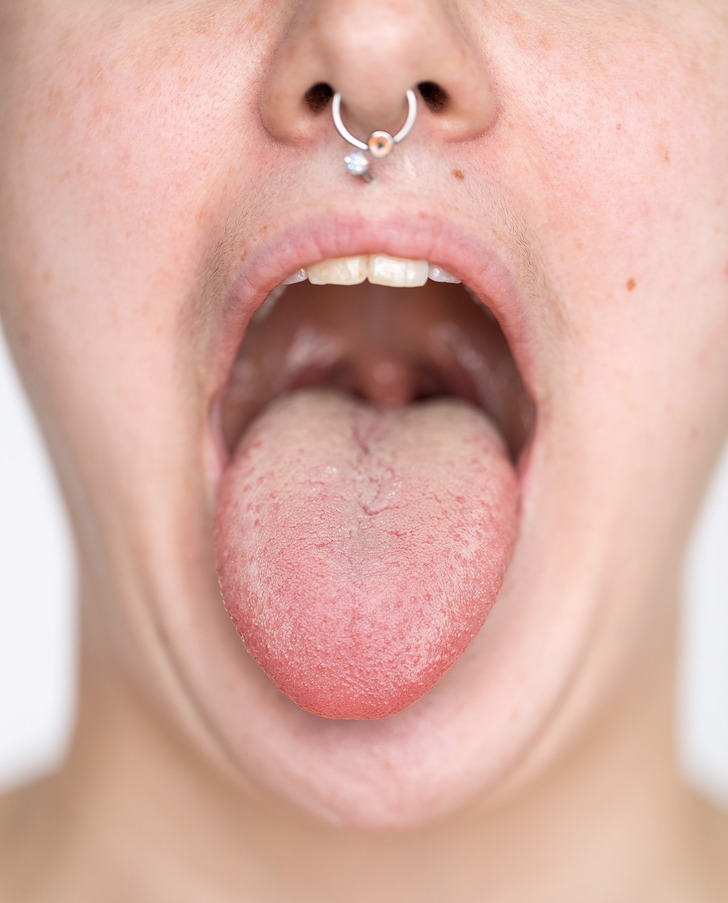
There are some things that make the appearance of white plaque on the tongue more probable:
- Age
- Taking antibiotics (white-yellow plaque appearing when there’s a fungal infection in the mouth)
- A diet that’s lacking enough fruits, vegetables, vitamin B12, and iron
- A weak immune system
- Bad mouth hygiene
- Dental prosthetics or other objects that can damage the tongue
- Dehydration and mouth dryness
What piercings have to do with white tongue
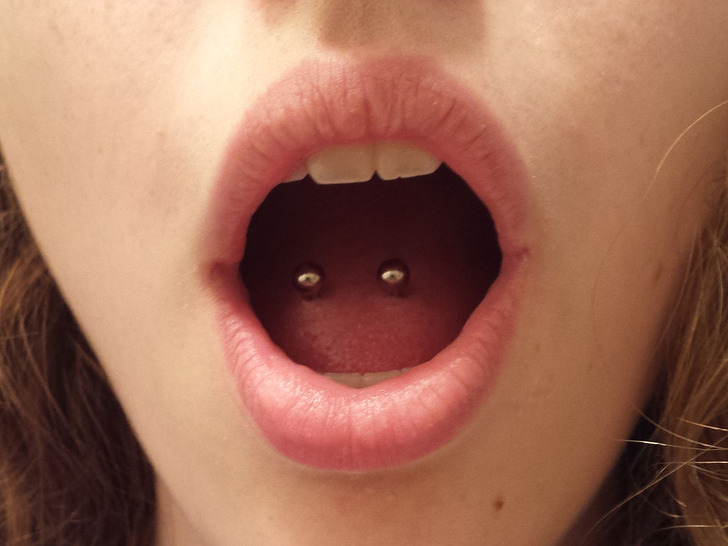
Right after piercing the tongue, there might be some white film present. This happens because the number of bacteria on the tongue increases, and it’s normal. Antibacterial mouthwash will help you get rid of it. Plus, there might be a ring around the piercings, which is normal too, and it means the tissue is healing.
If the plaque appears due to an injury (including piercings), the healing should take around 1.5 weeks. You should avoid irritants, such as hot, spicy, or sour foods and drinks.
How to get rid of white tongue at home
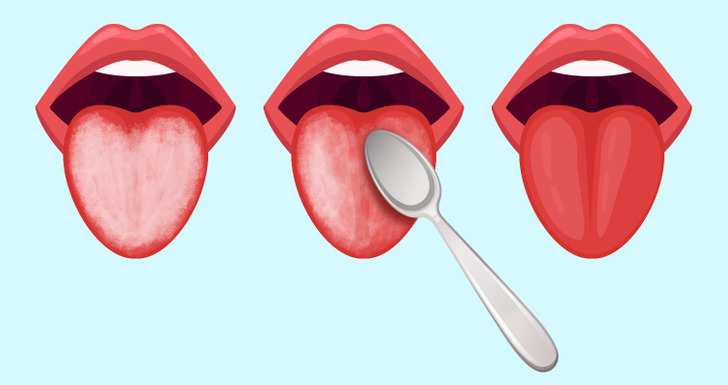
- Practice good mouth hygiene.
- Drink enough water.
- Brush your teeth using a soft toothbrush.
- Use a mild fluoride toothpaste — one that doesn’t contain sodium lauryl sulfate.
- Use fluoride mouthwash.
- Brush your tongue or use a tongue scraper to remove the white coating.
- Drink cold drinks through a straw.
- Avoid food and drinks that are spicy, salty, acidic, or very hot in temperature.
Who to talk to if you’re worried about your white tongue
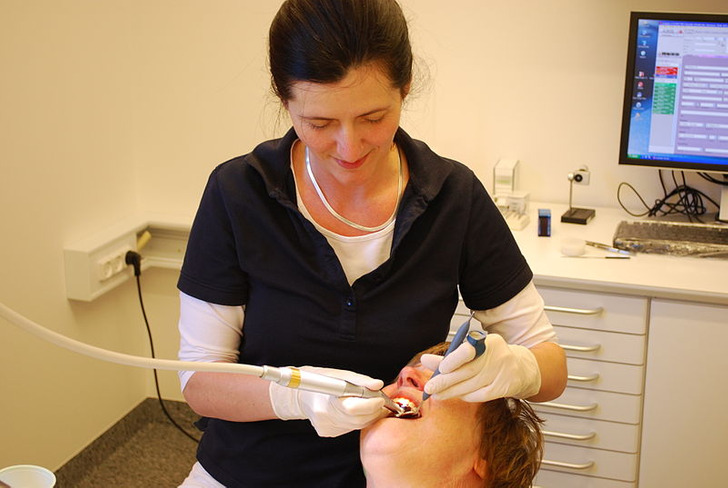
- Your dentist can help you remove the white film from the tongue and prescribe medications if needed.
- Your GP can diagnose the tongue, prescribe you certain medications and determine if the white tongue is an indicator of a more serious issue.
What do you do about white tongue?
Preview photo credit Genusfotografen (genusfotografen.se) & Wikimedia Sverige (wikimedia.se) / Wikimedia Commons, CC BY-SA 4.0, Martanopue / Wikimedia Commons, CC BY-SA 3.0
Little Pup was abandoned, forced to endure a string of sorrowful days. Today, he has transformed into an exceptionally friendly companion

In a world the place compassion and kindness are important, the story of just a little pet’s transformation from a distressed and confined existence to changing into an extremely resilient and succesful member of society is a testomony to the facility of affection and care. This heartwarming story highlights the resilience and capability for change that resides inside each dwelling being.
The journey begins with a small pet, as soon as stuffed with innocence and curiosity, who discovered itself trapped by the tough chains of confinement. Days become weeks, and fear settled within the hearts of those that encountered this unlucky creature. The pet’s eyes, as soon as full of hope and vitality, held a glimmer of disappointment, as if it had misplaced all religion on the planet.
Nonetheless, as destiny would have it, a collection of lucky occasions unfolded, bringing a ray of sunshine into the pet’s life. A form-hearted particular person, pushed by empathy and a need to make a distinction, found the pet’s plight. Decided to offer an escape and an opportunity at a greater life, they set out on a mission to liberate the toddler from its confinement and provide it an opportunity at a greater life.
With cautious dedication, the chains that had shackled the pet to its previous have been regularly eliminated. Step-by-step, the pet started to emerge from its cocoon of isolation and provide its loyalty and friendship to the world. The pet’s eyes, now full of hope and vitality as soon as once more, shone as if it had rediscovered the enjoyment of life. The toll of its restrictive life-style had been evident, because it struggled to search out consolation on the planet it had been denied for thus lengthy.
Nonetheless, as destiny would have it, a collection of lucky occasions unfolded, bringing a ray of sunshine into the pet’s life. A form-hearted particular person, pushed by empathy and a need to make a distinction, found the pet’s plight. Decided to offer an escape and an opportunity at a greater life, they set out on a mission to liberate the toddler from its confinement and provide it an opportunity at a greater life.
With care and dedication, the chains that had sure the pet to its previous have been regularly eliminated. Step-by-step, the pet started to emerge from its cocoon of isolation and prolong its belief to others. The pet’s eyes, now full of hope and vitality as soon as once more, gleamed as if it had rediscovered the enjoyment of life. The journey of its outstanding transformation had simply begun.
Within the days that adopted, the pet was immersed in an atmosphere full of love, persistence, and understanding. It was showered with light touches, soothing phrases, and nourishing meals. The pet’s once-downtrodden spirit started to blossom, forging deep emotional connections with the individuals round it.
The transformation of this little pet serves as a reminder that each dwelling being has the potential to beat adversity and thrive. It’s a testomony to the facility of compassion and the profound affect it will probably have on a person’s life. Let this story encourage us to be sort, empathetic, and responsive caretakers of all creatures, making certain that they too have the chance to flourish on this world.



Leave a Reply